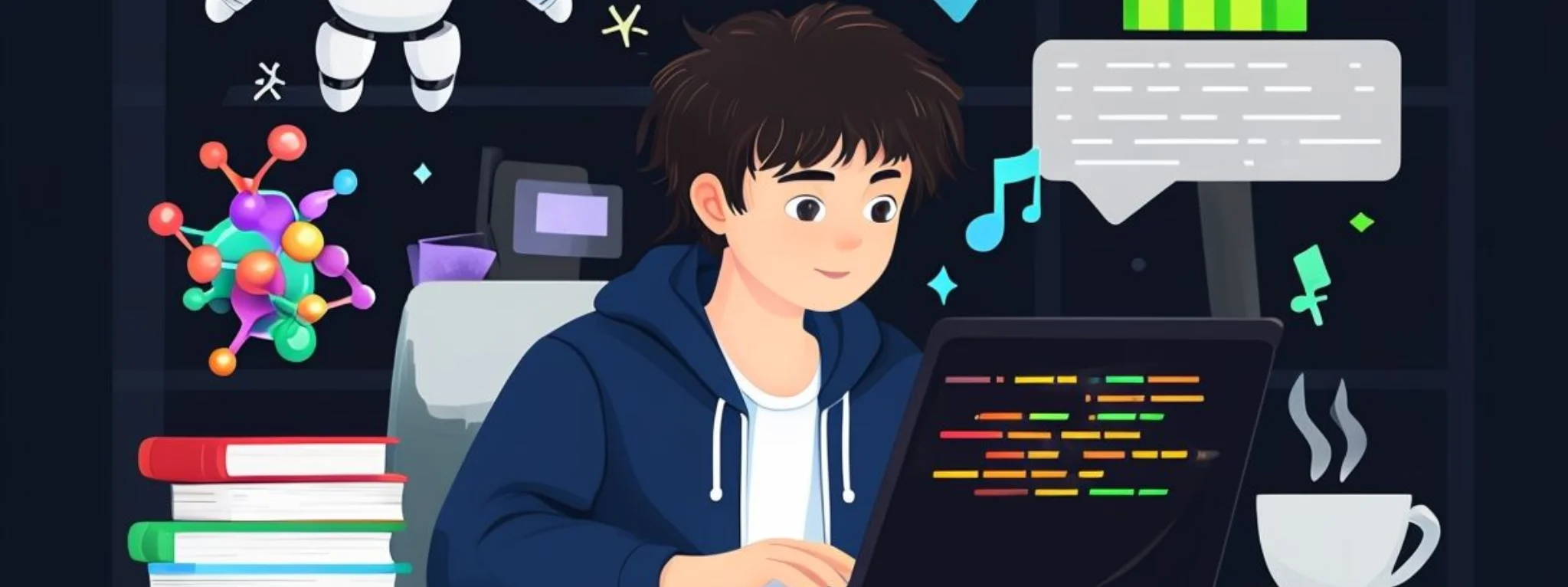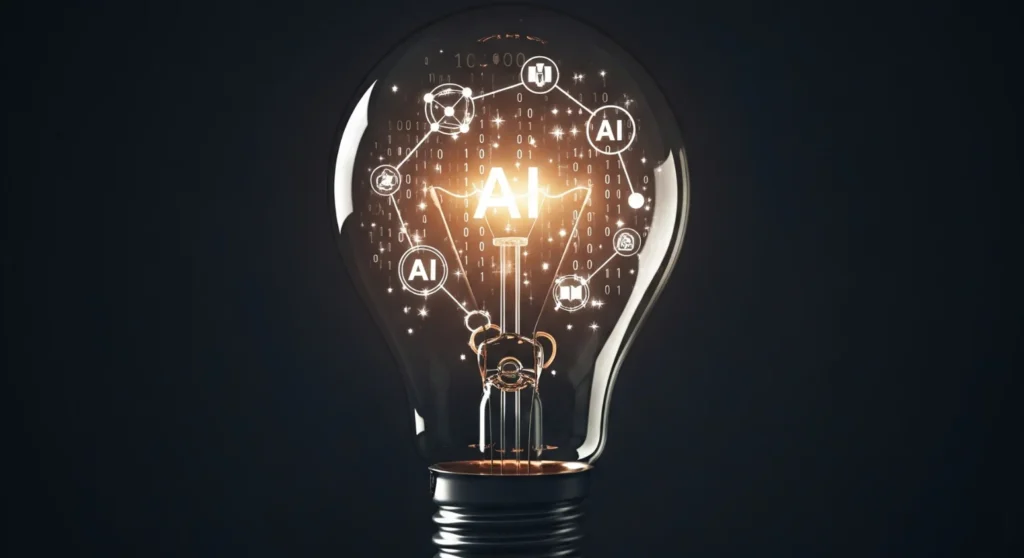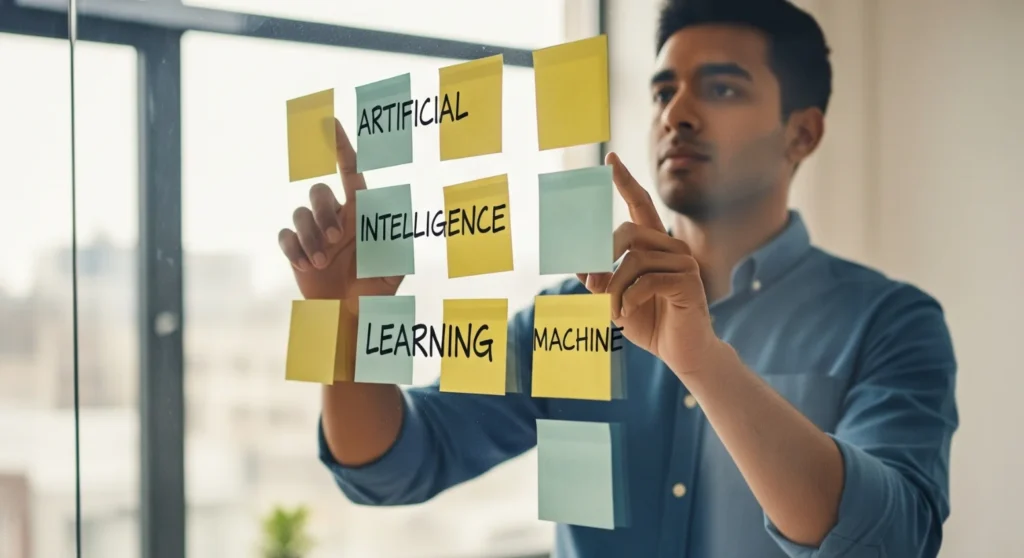Are you a student curious about artificial intelligence but unsure where to begin? Maybe you’ve heard terms like machine learning, chatbots, or image recognition, but they still feel like buzzwords more than something you could actually build yourself. The good news? You don’t need to be a data scientist—or even have years of experience—to start building your own AI projects with Python.
In this blog post, we’ll walk you through 5 cool AI-based projects you can create over a weekend. Whether you’re working on an AI project for college students, exploring ideas for your final year python ai projects, or simply want to experiment with Python in a hands-on way, these projects are designed to be approachable, fun, and educational.
From real-time object detection to social media sentiment analysis, each project introduces you to core AI concepts while guiding you through step-by-step implementation. You’ll not only boost your resume or portfolio but also gain the confidence to explore more advanced artificial intelligence projects in the future.
So, are you ready to turn your weekend into a launchpad for your AI journey? Let’s dive in and build something amazing—together.
Table of Contents
1. Build a Simple Chatbot with Natural Language Processing

Ever wondered how Siri or ChatGPT understands what you’re saying? With Python and a few tools, you can build your own chatbot—and it’s easier than you might think. This is a great AI project for students looking to learn how artificial intelligence can process and respond to human language.
A chatbot is one of the most accessible AI based projects out there. It helps you get hands-on with natural language processing (NLP) while building something practical and fun.
Why Start Here?
- Beginner-friendly: You’ll use straightforward Python code and libraries.
- Real-world relevance: Chatbots are used in customer service, education, and personal apps.
- Customizable: Add new features as your skills grow.
What You’ll Need
- Python and a code editor
- Libraries like nltk or spaCy
- Optional: Flask for a simple web interface
Key Steps
- Define your bot’s purpose (FAQ helper, quiz bot, etc.)
- Design basic conversation flows using intents and responses
- Clean and tokenize input using NLP tools
- Match user input to responses with logic or a simple model
- Test and tweak for better results
Want to go further? Add voice input or turn it into a web app. This artificial intelligence project using python is a solid foundation for understanding how machines interact with people—and it’s something you can build this weekend.
Source Code: Click Here
2. Create an Image Classifier with Deep Learning

Have you ever wanted to teach a computer how to “see” like we do? Building an image classifier is a fascinating way to explore computer vision and deep learning—and it’s surprisingly doable with Python. This type of AI project for college students offers a hands-on intro to artificial intelligence that goes beyond theory.
An image classifier can recognize objects, animals, or even handwritten digits by training on labeled image data. It’s not just fun—it’s practical and highly relevant in today’s AI-driven world.
Why Try Image Classification?
- Visual and intuitive: You’ll see the model’s learning process in action.
- Widely used: From self-driving cars to medical imaging, image classification powers real innovations.
- Great for portfolios: It’s a standout AI based project that demonstrates your deep learning skills.
What You’ll Need
- Python
- TensorFlow or PyTorch (TensorFlow is beginner-friendly)
- A dataset of labeled images (CIFAR-10 or your own custom set)
- Jupyter Notebook or any Python IDE
Steps to Build Your Classifier
- Prepare Your Dataset
Download and organize image data into categories—cats vs. dogs, handwritten numbers, etc. - Preprocess the Images
Resize, normalize, and split the data into training and testing sets. - Build a CNN (Convolutional Neural Network)
Use TensorFlow or Keras to create a model that can learn patterns in image data. - Train the Model
Let your model learn from the training set, then test it on unseen images. - Evaluate and Improve
Tweak the model’s layers, learning rate, or dataset to boost accuracy.
Take It Further
- Try real-time image classification using your webcam
- Add more complex layers for better precision
- Use transfer learning to save time and improve results
If you’re a student searching for an exciting artificial intelligence project with real-world relevance, this one checks all the boxes. You’ll develop your Python and machine learning skills while seeing tangible results—literally. Ready to teach your computer to see? Let’s keep building.
Source Code: Click Here
3. Make Your Own AI Music Generator

What if you could teach a machine to compose original music? Sounds futuristic, right? But with Python and a bit of creativity, you can build your own AI project using python for students that turns code into melody. Whether you’re musically inclined or just curious about how machines can understand rhythm and patterns, this is one of the most engaging AI based projects you can tackle.
AI-generated music is more than just a novelty—it’s a way to explore how artificial intelligence interprets structure, timing, and emotion in sound. You’ll get hands-on experience with sequence modeling, while building something you can actually listen to and share.
Why Build a Music Generator?
- Creative outlet: Combine logic and art in one project
- Skill-building: Learn how sequence data is used in AI
- Memorable result: End with a shareable, playable creation
What You’ll Need
- Python
- Jupyter Notebook
- Magenta (a TensorFlow-based library for music and art generation)
- MIDI datasets (free and widely available online)
Steps to Compose with AI
- Understand the Basics of Musical Structure
Get familiar with how music is represented digitally—especially in MIDI format. - Install and Explore Magenta
Use Magenta’s tools like MelodyRNN or MusicVAE to start generating simple sequences. - Train or Fine-Tune a Model
Train on a dataset of classical or pop songs—or your own compositions—to help the AI learn structure and style. - Generate and Export Music
Let the model compose a new piece, then export it as a MIDI or audio file. - Refine and Remix
Edit the output, layer tracks, or combine multiple sequences to create richer pieces.
Make It Unique
- Use your own MIDI files to give the model your musical voice
- Build a simple UI to let users generate music on demand
- Create visualizations of the notes as they play
This isn’t just an artificial intelligence project—it’s an experience that blends code with creativity. If you’re looking for an AI project for BCA students or anyone wanting something a little different, this one stands out. Plus, who doesn’t want to say, “I built a robot that makes music”?
Source Code: Click Here
Explore: How AI Is Powering the Future of Autonomous Vehicles
4. Analyze Social Media Sentiment with Python

Have you ever wondered how people feel about a trending topic on Twitter or Instagram? With Python, you can build a simple tool that reads social media posts and figures out if people are feeling positive, negative, or neutral. This is one of the best AI projects for college students who want to work with real-world data and learn something useful.
Sentiment analysis helps computers understand emotions in text. Companies use it to find out what customers think, and now—you can too.
Why Try This Project?
- Useful skills: Learn how to collect and understand online data
- Real-world impact: See how people feel about events, products, or trends
- Great for your resume: Show off your Python and AI knowledge with a real project
What You’ll Need
- Python
- Tweepy (for Twitter data)
- TextBlob or VADER (to detect emotions)
- Matplotlib or Seaborn (to make graphs)
Steps to Build Your Sentiment Tool
- Pick a Platform
Start with Twitter because it has lots of short and simple posts. - Get the Data
Use Tweepy to collect tweets based on keywords or hashtags. - Clean the Text
Remove links, emojis, and special characters so the AI can read the text better. - Analyze Sentiment
Use TextBlob or VADER to check if each post is positive, negative, or neutral. - Show the Results
Make simple charts to display how people are feeling overall.
Want to Do More?
- Compare how people feel about different topics
- Track how feelings change over time
- Create a simple web app to show your results live
This artificial intelligence project is easy to understand, fun to build, and teaches you real skills. If you’re looking for an AI project using Python with meaning and visibility, sentiment analysis is a great choice.
So, are you ready to find out what social media is really saying? Let’s dig into the data!
Source Code: Click Here
5. Build an AI-Powered Number Guessing Game

Looking for a fun way to learn AI without diving into complex math or heavy data? A number guessing game powered by machine learning is a great beginner-friendly AI project for students—and yes, it’s as fun as it sounds. You’ll train an AI to guess a number you’re thinking of, and watch as it learns to improve its guesses over time.
This AI based project is a playful way to understand how artificial intelligence can make decisions, learn from feedback, and improve performance with each try.
Why Try a Game-Based Project?
- Simple to build: No huge datasets or complicated models
- Easy to understand: Focus on the logic of learning and feedback
- Fun and interactive: You’ll enjoy playing with what you’ve built
Tools You’ll Need
- Python
- Scikit-learn or a basic custom ML algorithm
- Jupyter Notebook or any code editor
How the Game Works
- Set the Rules
The user thinks of a number between, say, 1 and 100. The AI tries to guess it. - Give Feedback
After each guess, the user says whether the number is higher, lower, or correct. - Train the Model
The AI uses feedback to narrow down future guesses. It can start with random guesses, then switch to smarter ones (like binary search or even reinforcement learning). - Repeat Until Correct
The AI continues guessing until it finds the right number, learning from every attempt.
Want to Make It Smarter?
- Add a scoring system to track performance over time
- Use reinforcement learning to let the AI learn better strategies
- Build a simple interface so others can play too
This type of artificial intelligence project is perfect for students who want a low-pressure, high-reward way to explore how machines learn. It’s interactive, insightful, and can be built over a weekend—making it ideal for beginners and those looking to have some coding fun.
If you’re a btech student or working on a final-year idea, this mini game can even evolve into something bigger. Ready to outsmart your own AI? Let’s build it!
Source Code: Click Here
Conclusion: Your AI Journey Starts This Weekend
So, which of these cool AI projects using Python are you most excited to build?
Whether you’re training a chatbot, teaching your computer to “see,” generating original music, analyzing social media, or creating a smart guessing game, each project is a powerful step into the world of artificial intelligence. And the best part? You don’t need a Ph.D. or years of experience—just Python, curiosity, and a weekend.
These hands-on experiences not only sharpen your coding and problem-solving skills, but they also show future employers or teachers that you can turn concepts into real, working solutions. If you’re looking for an AI project for college students or a creative way to stand out in your python ai projects for final year students, these ideas are the perfect starting point.
So why wait? Open your laptop, pick a project, and start building. Your future in AI doesn’t have to begin someday—it can begin this weekend.
Frequently Asked Questions
1. Which AI project is best for beginners?
A simple chatbot using Python and NLP is often the best place to start. It’s easy to build and helps you understand how machines process language.
2. How much Python do I need to know for these projects?
Basic knowledge is enough for most. If you’re comfortable with loops, functions, and simple libraries, you’re good to go.
3. Are these AI projects suitable for final-year students?
Yes! These ideas are ideal AI projects for final year students because they are practical, impressive, and can be expanded into full-scale applications.
4. Can I showcase these projects in my portfolio?
Absolutely. These AI based projects are great for resumes, GitHub portfolios, and college presentations—they show real-world application of your skills.




